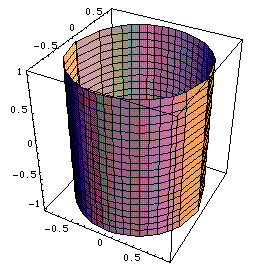Last lecture left off discussing the "marriage" of vectors and calculus in order to find a vector tangent to a given curve in the x-y plane. The following example illustarates exactly how this can be done.
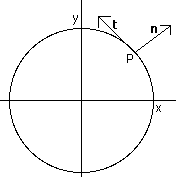


In three dimensions, the two dimentional concepts are extended, with the simple addition of a third component- the unit vector parallel to the z axis, k.
Magnitude and direction are still computed in extremely similar ways.
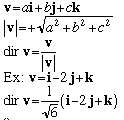
We would still like to have angles to describe direction rather than a difficult to grasp set of components. Two Dimentions required one angle to define a direction. In three dimensions we'll need two.
Spherical coordinates define a vector in terms of its length (R), an angle between the vector and the z-axis (phi), and the angle between the vectors projection onto the xy plane and the x-axis (theta). [See picture below].
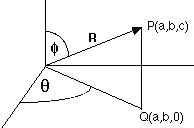
By looking at the right triangles formed by the vector, its projection, and the axes, the relationship between the Spherical coordinates and Cartesian ones can be determined. It turns out that x = R sin (phi) cos (theta); y = R sin (phi) sin (theta); and z = R cos (phi).
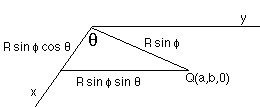


The first equation is that of a sphere, while the second is that of a horizontal plane. The plane cuts the sphere parallel to the xy plane creating an intersection set of a circle. This is pictured below (Generated by Mathematica).
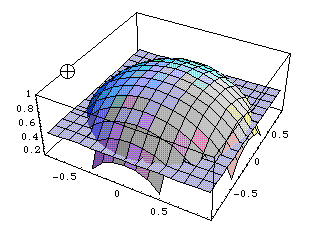

This equation is the mathematical solution of the first set of equations, but it behaves very differently. Because z is not specified here, it can be anything and the result is the cylinder pictured below, which has its axis on the z axis and a radius of .866 (Generated by Mathematica).
